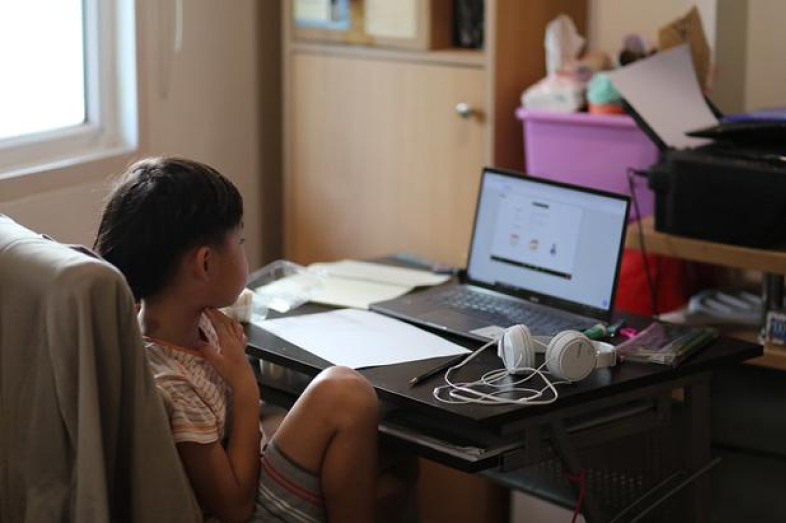
Schools Experiment to Allay the Inequitable Impact of COVID-19
Pandemic sparks calls for changes to technology, curriculum and funding.

Pandemic sparks calls for changes to technology, curriculum and funding.
In an effort to counteract the way COVID-19 is worsening many educational inequities, government and educational leaders around the country are trying a variety of interventions such as free headphones, traffic light Wi-Fi, and more explicit teaching about the realities of race relations.
Educational leaders and researchers urged journalists at the Education Writers Association’s 73rd National Seminar to monitor such pilot efforts because of the widespread demand for — and meager funding of – programs that can help students learn amid a pandemic.
When schools made the sudden transition to remote learning in the spring, low-income students suffered the most educational setbacks. Census data, for example, shows that low-income, rural and communities of color disproportionately lack broadband access. In addition, many first-generation and immigrant students couldn’t get help from family with technology needed to access online learning.
To make matters worse, the economic shutdown is slashing funding just when schools needed extra money to scale up online courses and provide students with laptops and hot spots.
“States don’t have the same resources they had even just six months ago. Some of the equity programs and policies that were making a difference may not be funded as well as they need to be to continue to make a difference,” warned Jeremy Anderson, president of the Education Commission of the States.
And the budget cuts will only likely get worse, he predicted. Since K-16 education makes up about 60% of most states’ budgets at a time when tax receipts have plunged, ”I think we’re going to see really difficult budget cuts” starting in January, when most governors put their budgets together, Anderson said.
These short-term inequities are threatening to reduce opportunity over the long term. Students’ college prospects, for example, are being limited by the lack of access to counselors and admissions tests, Anderson said. About seven million high school juniors and seniors may not have a chance to take ACT or SAT tests, he said. And a reduction in the number of student who filled out the Free Application for Federal Student Aid starting in April indicates many students are struggling to keep up with other important college paperwork and deadlines.
In the San Antonio public high schools, where 90% of the students come from low-income families, “We had over 80% of our students not filling out their financial aid and scholarships,” noted San Antonio schools superintendent Pedro Martinez.
The widespread layoffs and business closures that are reducing families’ incomes are throwing up even more barriers to college, since they reduce families’ ability to afford tuition, explained Ruth Simmons, president of Prairie View A&M University in Texas.
“This is an enormous stress factor for first-generation students and low-income students,” Simmons said. “On a day to day basis, I receive an influx of emails and calls from parents and students who say they just can’t make it work this year.”
School leaders around the country are trying out new ways to provide the technology students need to take online courses, said Anderson. Wyoming, for example, prohibited the suspension of internet services if bills had not been paid. California educators developed a partnership with Google to provide Chromebooks and hot spots. “There are some really innovative pilot programs that school districts and universities have pulled together to try to make it so that all students have equitable services,” he said.
The San Antonio school district, for instance, has already distributed over 40,000 devices and over 4,000 hot spots. It also hosts tech orientations for students, parents and teachers. To make sure every student has access to the internet, the district also partnered with the city of San Antonio to allow students to access the Wi-Fi hot spots placed on traffic lights that had previously just been used to manage traffic flow.
More and better technology is just a stopgap measure, however. A growing number of schools are addressing the inequities by changing their curricula to confront racial realities head-on. At Prairie View, for example, Simmons is in the process of developing a new Center for Race and Justice to engage students in critical lessons about the history and implications of race in America.
“We have failed to help students learn how to understand history, how we came to this point, how they can intervene in this issue, how they can make things better for the future,” Simmons said.
The long-term solutions to the inequities involve even bigger reforms: changes of heart, mind and culture, Simmons said, explaining: ”This is an enormously vast and complex problem that has accrued over a very long period of time … I always discourage people from thinking of silver bullets.” She urged higher education leaders to move away from tokenism and toward caring.
“There is an immense amount of tokenism that goes on in the area of race relations, and that is as pernicious as anything else that would we’re doing. Institutions believe because they have achieved a certain percentage enrollment and they have a very pretty postcard of participation by underserved groups believe that they’ve done their job. They walk away and say, ‘You should be grateful you’re here. Now go and leave us alone.’ That attitude creates a tremendous resentment on the part of students, as well it should.”
“The point is to understand, at a profound level, how to behave toward other human beings, believing that they are equal to us in every respect, valid to us in every respect, and wanting to communicate across differences.”
“It’s not a small thing,” Simmons added. “It’s everything to our students. It’s everything to people who are on the margins of society.”
Your post will be on the website shortly.
We will get back to you shortly